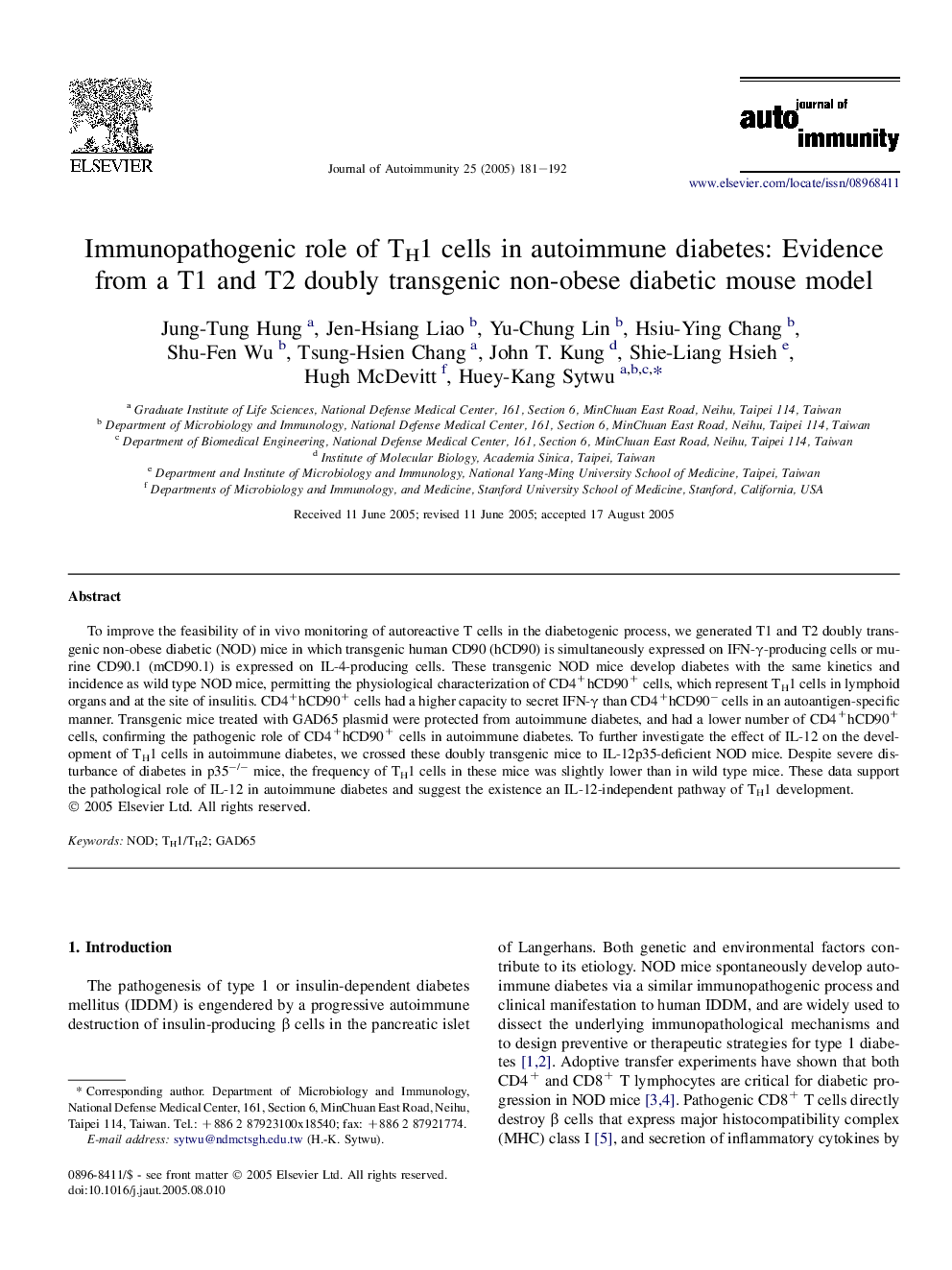| Article ID | Journal | Published Year | Pages | File Type |
|---|---|---|---|---|
| 9267891 | Journal of Autoimmunity | 2005 | 12 Pages |
Abstract
To improve the feasibility of in vivo monitoring of autoreactive T cells in the diabetogenic process, we generated T1 and T2 doubly transgenic non-obese diabetic (NOD) mice in which transgenic human CD90 (hCD90) is simultaneously expressed on IFN-γ-producing cells or murine CD90.1 (mCD90.1) is expressed on IL-4-producing cells. These transgenic NOD mice develop diabetes with the same kinetics and incidence as wild type NOD mice, permitting the physiological characterization of CD4+hCD90+ cells, which represent TH1 cells in lymphoid organs and at the site of insulitis. CD4+hCD90+ cells had a higher capacity to secret IFN-γ than CD4+hCD90â cells in an autoantigen-specific manner. Transgenic mice treated with GAD65 plasmid were protected from autoimmune diabetes, and had a lower number of CD4+hCD90+ cells, confirming the pathogenic role of CD4+hCD90+ cells in autoimmune diabetes. To further investigate the effect of IL-12 on the development of TH1 cells in autoimmune diabetes, we crossed these doubly transgenic mice to IL-12p35-deficient NOD mice. Despite severe disturbance of diabetes in p35â/â mice, the frequency of TH1 cells in these mice was slightly lower than in wild type mice. These data support the pathological role of IL-12 in autoimmune diabetes and suggest the existence an IL-12-independent pathway of TH1 development.
Related Topics
Life Sciences
Immunology and Microbiology
Immunology
Authors
Jung-Tung Hung, Jen-Hsiang Liao, Yu-Chung Lin, Hsiu-Ying Chang, Shu-Fen Wu, Tsung-Hsien Chang, John T. Kung, Shie-Liang Hsieh, Hugh McDevitt, Huey-Kang Sytwu,
